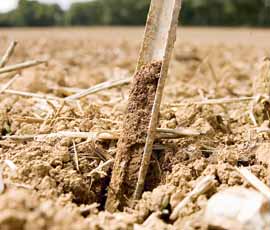Royal Welsh Show: Welsh grassland is sulphur deficient

More than 90% of Welsh grassland tested in a recent study was found to be sulphur deficient, initial findings revealed.
The study, funded by Farming Connect and carried out by IBERS on 26 Farming Connect Demonstration farms this year, revealed 90% of grassland sampled required an application of sulphur before second-cut silage, while more than half needed an application of sulphur in the spring prior to first cut.
Meanwhile a separate DEFRA survey of national fertiliser practice found only 7% of farmers were applying sulphur to grassland.
Sulphur shortages reduce grass yield, quality and efficiency of nitrogen use.
Sue Buckingham from IBERS, which is carrying out the study, says the results should signal a loud and clear message to Welsh farmers.
“Farmers need to carry out sulphur analysis of herbage to find out if sulphur is needed,” she says.
Ms Buckingham says sulphur can require annual applications, because the nutrient is soluble and there is no build-up in soil reserves.
To benefit from sulphur applications pH, phosphate and potash levels must be correct.
“For grass this means a pH of 6.0, phosphate index of 2 and potash index of 2-. Where sulphur is needed it should be applied at 40kg/ha of a sulphate containing fertiliser,” she adds.
Royal Highland Show: Soil carbon app launched
